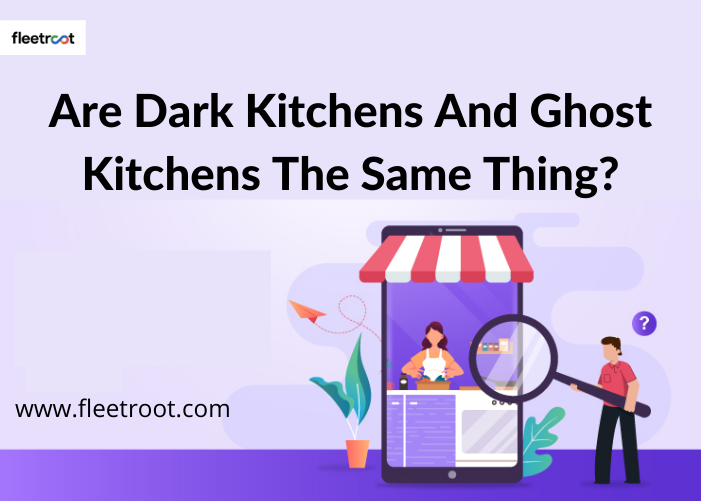Summary
As the 21st century has progressed, the restaurant industry has witnessed a seismic change with the advent of modern, App-dominated virtual restaurants, 3rd party aggregators, dark kitchens, and ghost kitchens.
While a lot of these terms are used interchangeably, they do have some innate differences. But what is common, though, is the use of technological advances to operate a primarily virtual business model.
What exactly is a “dark kitchen”?
This millennium has witnessed the traditional restaurant industry undergo a sea of change. A change that has single-handedly been driven by the business of food delivery. As internet penetration grew, became cheaper, more accessible, and the modern-day “App- economy” (including 3rd party delivery apps) proliferated, the phenomenon of ordering food via such means grew leaps and bounds.
The rapid growth of home deliveries spawned an entirely new business model for the food business, namely “dark kitchens”. Essentially, this is a kitchen that produces food without a physical restaurant front attached to it. All its food is delivered to orders received online.
Just like all business models in every industry, the dark kitchen business model, too, has several advantages and limitations. But hang on – what is a dark kitchen, exactly?
One concept, various names: Cloud kitchens, virtual kitchens, ghost kitchens, delivery-only, or dark kitchens – these are different names for the same thing. Whichever way you choose to call it, a dark kitchen uses the same business model i.e. sells made-to-order food or meals via delivery for online orders received.
Such “kitchens” do not have any seating for diners that want to eat onsite i.e. a traditional restaurant. They only concentrate on preparing the food once the order has been received – for example, via an online food court, or a 3rd party delivery app. Once the order is ready, the delivery person arrives to collect it and complete the delivery at the customer’s address.
In some cases, the option for takeout i.e. allowing customers to pick up their order themselves is also offered by dark kitchens.
How did dark kitchens originate?
Aided by technology and changing consumer behavior, the food industry rapidly became part of the burgeoning and increasingly successful E-commerce industry.
Success stories of online ordering companies like Uber Eats opened the doors for dark kitchens.
Thanks to the arrival and efficiency of these 3rd party delivery apps, dark kitchens could now connect easily with their potential customers and promptly deliver orders to their homes or offices without having to open storefronts.
Success brings success – and, since attracting customers and serving them profitably has become so much easier, the supply side (e.g. dark kitchens, small proprietor-owned restaurants) has grown rapidly to keep up with the ever-increasing demand for online food.
3rd party delivery apps: fuelling dark kitchen growth
VCs have poured boatloads of funds into startups that are setting up and growing food delivery platforms. Dark kitchens are amongst the hottest industry segments touted for rapid growth and profit this decade.
The unfortunate advent of COVID-19 forced several physical restaurants to go belly up. Those that survived also reinvented themselves by (forcibly) adopting a cloud-kitchen model. They used their empty dining rooms for storage and operations, offered pruned-down menus, meal kits, grocery supply boxes (etc.) – essentially, everything they could do to run a pickup, or delivery, model.
However, even though sit-in dining is making a comeback as the pandemic wanes, several such dine-in restaurants have discovered the benefits of running a cloud-kitchen business via digital platforms. Therefore, don’t expect the dark kitchen to suddenly die away anytime soon! It’s here to stay. Not only has it brought more customers to the food business but both, dine-restaurants and dark kitchens should settle into a profitable co-existence as time wears on.
Advantages of dark kitchens
- Reduce overheads: no onsite seating cuts rentals, serving staff not needed
- Experiment faster: with new menus, food choices, and concepts. Those that fail can be discarded quickly and new ones tried
- Target multiple customer segments: the same kitchen can prepare several virtual brands. Makes it easier to broad-base your offering, serve a wider range of customers, achieve faster and greater profitability
Virtual restaurants vs. Dark kitchens
While the two names are used interchangeably, neither has a physical presence, and both exist purely for pickup or delivery via online ordering, there are some key differences:
- Virtual restaurants (frequently called cloud restaurants) tend to be new brands that operate out of restaurants/kitchens that already exist
- Dark kitchens (virtual kitchens, ghost kitchens) too, exist only online but typically operate from their own physical kitchen – they don’t operate out of existing restaurants/kitchens
What are some important tenets for success in this industry?
Let’s look at some key components:
1. Location, location, location: Don’t forget that you have no customer footfall as a regular restaurant would and are completely dependent on online orders. Therefore, a strong suit would be to have most of your customers within a 3-5 mile radius – this ensures the food is fresh, the delivery times are quick (and, delivery costs minimal).
Make sure you research all important factors like existing competition, area demographics, spending power, and likely preferred cuisines (etc.)
2. Use correct technology: Needless to say, it is the wonder of modern technology platforms like SaaS, App-economy, data analytics (etc.) that has created this market space. Therefore, selecting the correct technological solutions is critical to success. Some important considerations:
- Decide on whether to use 3rd party providers (aggregators) or to run your own delivery service. Naturally, each has its advantages and limitations. An elaborate network of delivery partners vs. margin erosion; ride off of 3rd party promotions vs. being responsible for marketing yourself; managing your own order fulfillment vs. shifting responsibility to an aggregator are just some issues that work well or become more challenging based on your option
- Several ghost kitchens choose to use 3rd party operators or aggregators. An immediate benefit of this is that it allows you to benefit from the scale and efficiency of their processes since it aggregates orders from multiple platforms. This streamlines your order management process greatly. You receive all orders via a single, unified system as against having to maintain separate, disjointed systems for each of your partners. Consolidation enables efficiency, clarity, and reduced operating costs
3. Marketing is critical-to-success: The importance of marketing, messaging, and brand creation for a dark kitchen, or virtual restaurant cannot be stressed enough! Remember, you are what your customers see – and, perceive – of you online.
There isn’t any signage, neon lights, or fancy boards “upfront”. Your brand personality across social media, food pictures, email marketing, and online store-front presence on digital platforms (etc.) is what will win – or, lose – your customers in a fiercely competitive market.
4. Shed your fear: You can rest assured that dark kitchens aren’t going anywhere anytime soon! If you take the correct steps in running your cloud kitchen – such as using the correct technology, effective marketing methods, segmenting your customers correctly, etc. – this market now represents a huge opportunity!
Conclusion: As is evident, the benefits of running a dark kitchen in today’s tech-dominated world are many. Make sure you use the correct tech such as modern, automated best last mile delivery software.




